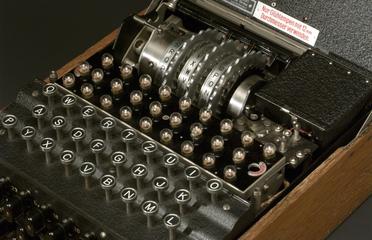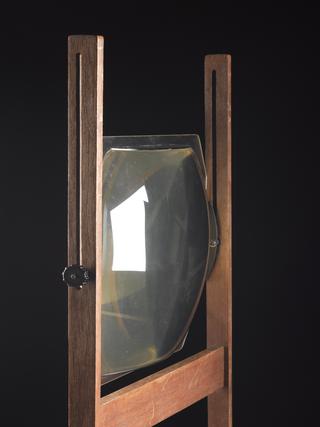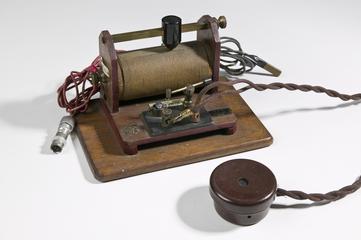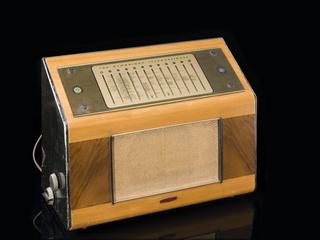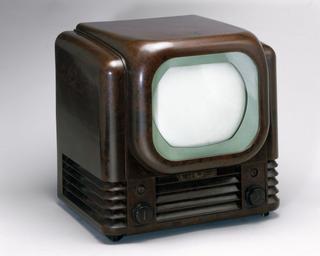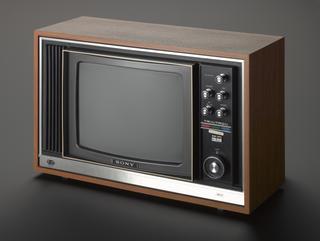








Crystal wireless set, No. 2 model manufactured by Brownie Wireless Company. No headphones, c. 1924
For many early radio listeners, purchasing a receiver which came with a loudspeaker was prohibitively expensive. Instead, they would listen to programmes through headphones. A crystal radio set was a simple and cheap option. It consisted basically of a tuned circuit and a crystal detector, and had no batteries, the power delivered to its British Thomson-Houston headphones all coming from the transmitter. This radio, model No. 2, was manufactured by the Brownie Wireless Co. of Great Britain Ltd.
